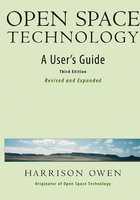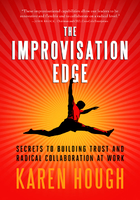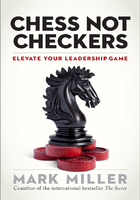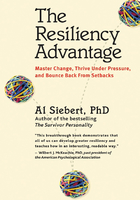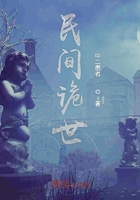The salvation of this human world lies nowhere else than in the human heart, in the human power to reflect, in human modesty, and in human responsibility.
-Václav Havel
Ever since he was a little kid, Patrick Herson thought he would become a doctor. His father often told stories of the small-town general practitioners who delivered Patrick and his sisters. "I do have a sense of calling," Patrick told me, "but it was more about hero worship of the docs who took care of us. Becoming a doctor felt like something natural to do." He happily practiced medicine for years, delivering more than five hundred babies himself. He also took on added leadership roles. As time went on, he became frustrated trying to do both-and do both well. Eventually Patrick realized he could have a greater impact on patients' health by leading the good work of others rather than by caring for patients directly. He became a medical director overseeing six hundred providers in Minnesota, where he found himself guiding and, as he says, "occasionally dragging" his medical group through a tumultuous period of change.
"Earlier in my career there were times when I had to do things to and with my patients that I knew would be difficult," Patrick said, naming examples such as giving immunizations or a spinal tap, or an aggressive childbirth because the baby was in trouble and needed to be born before a C-section could be done. "I could confidently know that it was done in the name of serving a patient and leading to a predictably better outcome."
But when he stepped into the director role, Patrick remembers thinking, I'm not so confident I can point with assurance that everything will be better when all is said and done. How do I guide my group and myself through this?
To get through those changes, Patrick knew he needed to continue to grow in mind, heart, and skill. And he needed like-minded and like-hearted leaders to turn to for encouragement. Patrick signed up for one of our six-month leadership programs (the Courage & Renewal Academy for Leaders) to give himself those resources. To his surprise, he found himself needing support more than ever when he was promoted quite suddenly to interim president of his medical group, responsible for leading two thousand employees.
"In my first two weeks I was feeling a little bolloxed by the responsibility. I remember having an image of this metaphor that I was standing on the top of a ten-meter diving platform ready to jump in. The pool itself represented bringing my whole self into my leadership role, living my life inside out, and bringing the passions that boil inside of me to that. I remember being aware I could just as easily back off down that platform, come down the stairs, and quietly slip into the pool. In many ways, that choice felt safer. I couldn't embarrass myself. I might land cattywampus. Yet it felt really important to take a running leap into the pool."
So he leapt into his new role, but did so with humility. "I often say to people, since I don't practice medicine anymore, that I'm the least useful employee we have in our medical group. Our patients are seen by about six hundred physicians and nurse practitioners, physician assistants, midwives, plus medical assistants, nurses, lab techs, X-ray techs, and so on. My role as a leader is creating a vision of what that patient care can look like and what is possible."
Patrick likens his role to that of an attentive gardener: "What should that garden look like? What do our patients need? What can we be providing for people? I can't make the vegetables grow; I just can do my best to be attentive to them and get the preparation right. The right seed, water when necessary, but then stand back and watch that kind of magic happen."
Patrick told me that he has attempted to create those right conditions by applying a variety of practices and mindsets, first for his own renewal: "For starters, I've just slowed down a little bit, which I think has been an important part of my leadership, to let people catch up with me, but also give myself a chance to catch up with my thoughts and ideas as well. I have more patience to step back a bit and be more observant of what's happening."
He has also brought specific practices into leading together with colleagues, and he sees the results ripple out. Many employees-medical directors, clinic administrators, physicians, and midwives-have attended Courage-based programs, so the practices are gaining traction throughout the organization.
"We use the touchstones from time to time. Not every month, but if I know that we're getting into a thorny topic or something that's really critical to our work, I'll stop and bring those out. It's a way to remind people that we're entering into a different kind of a dialogue, or there's a different intentionality to the conversation that I want to have. That's a nice way to just stop for a moment, review the touchstones, and then proceed with that work."
He intentionally tries to structure conversations so that people can feel a degree of safety. Curiosity paired with asking open, honest questions encourages people to express sincere doubts, concerns, or worries about the work.
"I often encourage people to be wonder-filled. Since doing so, I see more of that kind of inquiry instead of judgment. It's allowed us to have some better dialogue." More interactions center on questions like Why do you see this problem this way? Why is the solution you're proposing a good one?
"We recently had a really challenging strategic issue that we were facing about merging with part of the university. One day our CEO was feeling very beat up about the conversations, and I sent him a copy of Mary Oliver's poem 'The Journey.' He wrote me later and said, 'That was really nice to reframe what's happening.'"
That's an example of how a micro-shift of compassionate leadership can encourage others. "It's just trying to give a little nudge and redirect when possible, without having to do a lot of pulling and tugging myself." Because of his subtle modeling, some days Patrick has also received much-needed encouragement.
On another day, Patrick brought in a poem, Rainer Maria Rilke's "Go to the Limits of Your Longing," which has a line that says, "no feeling is final." That wasn't the line that struck Patrick the most when he first read it, but it flowed back to him with good will later that morning when the group got into a rough patch of conversation.
"We were hacking through something important for us, but it was tough going. I was getting a little frustrated and feeling a little off balance, and one of my physician leads said, 'Don't forget that line in the poem, Patrick. Not every feeling is final. This is going to get better.' I was so tickled that she had latched onto that and could offer it back to me as a little bit of a life buoy at that moment."
Is this person the same on the inside as he or she seems to be on the outside? Children ask this about their parents, students about their teachers, employees about their supervisors, patients about their physicians, and citizens about their political leaders. When the answer is yes, we relax, believing that we are in the presence of integrity and feeling secure enough to invest ourselves in the relationship and all that surrounds it.
-Parker J. Palmer
Leading from the Inside Out
The inner work of leadership depends on the strongest muscle in the human body: the heart. We mean heart in its ancient sense, "the place where intellect and emotion and spirit and will converge in the human self."[19] One way to visualize that convergence zone of courage is the M?bius strip.[20] Many leaders told me-their hands unconsciously drawing a horizontal figure eight as they spoke-of how this graphic model helps them stay aware of how their inner life influences their work. They talk of trying to be vigilant in maintaining the flow from inner to outer and outer to inner.
The M?bius strip is paradox personified. It represents the possibility of movement from a divided life to wholeness. Try this yourself:
Take a piece of paper and by cutting, folding, or tearing, make a long strip. Find a pencil or pen.
Let one side of the strip represent your outer or onstage life. Think of your image, persona, roles and responsibilities, influence, and impact. On this side of the strip, write down words or phrases that represent these aspects of your outer professional life and how others see you. You can include pressures, challenges, and problems that seem to land on your doorstep from the outside. What gives you privilege and power, or doesn't?
Let the other side of the strip represent your inner or backstage life. Think of your values, beliefs, ideas, hopes, and fears. Write down words about your inner, personal life-the parts of yourself that aren't as visible to others. What do you love? What would you fight for?
Now hold out this strip in your hands. You can see only one side at a time. Turn it over. Again. Regard what you've put on each side. Reflect for a moment on what you wrote down and why. The two sides seem completely separate-how could they be otherwise? The paradox is that they aren't always so separate. When we are born, we are undivided and whole. One can see this in newborns and little kids, with that wise light in their eyes, their cries of discomfort, their laughter full of delight. What you see is what you get! As we move into adolescence (and for some even sooner), the inner life becomes a place of fragile feeling and tender truth. As it dawns on us that the outer world is dangerous, we wall off and hide away that which is most precious. The side of us that is most private and personal is turned away from outer scrutiny, and we think we're safe. We try to hide our very private feelings of fear, passion, self-doubt, and uncertainty, hoping they don't spill out and embarrass us.
As we grow older, it's as if we are joining the two ends of our strip of paper so that it forms a circle that keeps the inner inside and the outer outside. There's a spectrum of experience on each dimension, but they are alone, enclosed, separated.
One word for this stage is "centering." A centered life is a step beyond the earlier dualism; we honor what's true for ourselves. But we've "circled the wagons" to confine inner truth to that which is familiar and comfortable, and exclude that which seems alien or challenging. This can prevent openhearted engagement with the rest of the world unless we invite it in, too.
But there's another way. Flatten the paper for a moment and give it one twist, then bring the ends back together, twist still intact. This creates a M?bius strip. If you run your finger around as though on a track and see where it goes, you'll find that it's on a continuous trek of three-dimensional space. This shape has only one side and only one edge! If you can get to a point where you are living your life as though you were on a M?bius strip, you can reclaim your birthright of wholeness.
If you are living on the M?bius strip, who you are is connected with what you do. Imagine yourself living and leading on this M?bius strip. Some days you might relax, "holed up" inside. Some days you run round as if on a racetrack. Sometimes you're stuck. Sometimes it seems you hang on that edge by a thread or your fingertips. But if you think of that single M?bius edge as your leadership growth edge, you may realize that despite everything hard going on, you can grow.
When we consciously connect the ends of that metaphorical paper and form a M?bius strip, we invite congruence and flow. Think of trust as the glue. We acknowledge that our inner lives do affect how we show up in the world. What happens outside, good or bad, flows back in, where it needs to be processed and integrated. It's the ongoing integration that matters, not being both places at once. Letting one aspect inform the other is a practice that is life changing-and life giving, especially for leaders.
At the Heart of the Work
The idea of courage as coming from the heart has inspired Patrick to talk with his team about holding patients "at the heart of their work" clinically.
"That's a nice place to be as a leader because it's hard for people to argue with you about that. It just naturally resonates with people who are drawn to health care. Being able to keep the frame and the focus on that, instead of the numbers, has been really, really helpful."
In describing the heart of his leadership, Patrick referred to the M?bius strip concept: "I really took to heart Parker's invitation to live your life inside out. To not hide that passion and what's inside of your life but to bring that into reality. It's there, showing up in other ways. Why not just be explicit about it?"
Patrick is one of many leaders who described being willing to wear their heart on their sleeve. Physicians especially spoke of their willingness to be vulnerable with their colleagues about their personal passion for patient care, whether that's by becoming an advocate for depressed patients, improving screening rates for breast cancer due to personal experience with loved ones, or managing hypertension or diabetes because of deaths in the family. Tapping into the reality of illnesses in any physician's family life, bringing that forward into dialogue, helps mitigate compassion fatigue, where protective emotional boundaries arise between physicians and their work.
"By allowing the reality of heartbreak and hope into strategy sessions, it becomes possible to avoid making decisions based on some cold, sterile, clinical prevalence or incidence. We can say, 'We've got to get our numbers up, because it's people like my daughter who are going to get better care and be leading lives that are healthier and better. We're going to detect cancers earlier for our mothers and our sisters and our daughters and our grandmothers, and they're going to have longer lives as a result of that.'"
The world needs competent people with the heart to keep showing up, day in and day out, and often on the night shift, to do the hard work. This inner work of embracing both passion and vulnerability is essential to cultivating a heart that can withstand all the pain and complexity and still show up to help make a difference.
Leaders like Patrick are adept at cultivating integrity for themselves and the people they work with and serve. Such integrity results from aligning insights both from the private conversations inside leaders' heads and hearts and the trust-building conversations leaders hold with other people.
We were created in and for a complex ecology of relatedness, and without it we wither and die. This simple fact has critical implications: community is not a goal to be achieved but a gift to be received.
-Parker J. Palmer
Receptiveness to Community
Leadership can be lonely, but it doesn't have to be. It requires not only a capacity to create community but also a willingness to receive community as a gift. Becoming receptive to the idea of needing a community is an act of social courage because it means allowing yourself to be real. Many leaders do not want to admit that they need help or have feelings or need other people. Such humility can be seen as weakness. Becoming receptive involves inner work. It must be present in you as "a capacity for connectedness"-a capacity to resist the forces of disconnection, such as narcissism, egotism, jealousy, and competition.
In the complicated landscape of your life, you may have community in one arena but not in another. At certain times in your life, you may be happily surrounded by colleagues, family, and friends; as circumstances change, you may find yourself alone once again. Community is rarely a given, obtained once and kept forever. As Patrick pointed out, community requires careful, regular tending, just as a garden does if it is to thrive for more than one season.
"I was keenly aware we didn't have as much fun together as I thought we probably should. I decided to recruit what we call the Fun Committee. There's three of us, and we have very fun planning meetings after hours in a local bar. Then we plan events, about one a quarter, for the senior executive team to do or to host for other executive groups. That sense of creating community has been really important, and helped us with some challenging work that we had to do in the first half of this year."
Cultivating community can also be a form of self-care. Patrick applies an adaptive leadership concept: giving yourself a sense of sanctuary on a daily, weekly, monthly, and annual basis.
"It's easy to feel you can't add anything new to your day, but this idea didn't require me to do something new, but just do what I'm doing with more intentionality." When stepping into the shower each morning or being more attentive at church, he says to himself, "This is my sanctuary."
"I play racquetball once a week with the same guy, and I now say to myself, 'This is my sanctuary.' I'm still a jerk to him on the court, but that's racquetball. At my poker group, I stop and look around the table at the five to fifteen guys and think to myself, 'This is my sanctuary; these are the guys in the lifeboat with me.'"
He often tells the people he leads, "You can create your own community if you don't have one. Find your own practice; here are some examples. Don't shy away from thinking you can't. There are lots of options."
The deep changes necessary to accelerate progress against society's most intractable problems require a unique type of leader-the system leader, a person who catalyzes collective leadership.
-Peter Senge, Hal Hamilton, and John Kania
Building Trust
The quality of trust Patrick has built up in his team is occasionally reflected back to him in affirming ways. At an organization-wide meeting one day with thousands in attendance, the interim CEO was talking about the process of hiring the next CEO. One of Patrick's physician leaders raised her hand and asked the interim CEO a very pointed question that contained within it a criticism of the approach they were going to take.
Patrick described what happened next: "As she sat down from the microphone and he answered it, a woman next to her said, 'That kind of question gets people fired in my part of our organization.' This medical director of mine said, 'Not in Patrick's organization.' When I heard that I thought, 'That's exactly the kind of trust that we are working to create together, so that we aren't passive aggressive. We don't hide things that would be really, critically important for us to know to do our work, to care for our patients better.'"
Patrick told me that he is more mindful of trust now that he's seen how practices like the touchstones-and his own mindset as a leader-can establish and hold safe space. "I'm mindful of just how precious that container is and to be careful that I don't ever ignorantly lose that trust with my people."
Imagine if organizations and institutions were viewed as M?bius strips "writ large." Organizations are often blamed for problems without anyone acknowledging that policies, decisions, systems, and corporate cultures are products of the people inside. Being willing to tackle hard conversations within an organization, to make room for honest debate and differing opinions, is an act of courage that requires and invites integrity. Aligning employees with a higher vision and purpose creates congruence. Alignment is not providing marching orders and directives; alignment is the natural outgrowth of inviting people to bring their best selves to the shared work and taking part in creating and achieving that vision together.
That Patrick brings his authentic self plus the touchstones and poetry into his work is a bold experiment in culture change, and he does so with patience. He knows that a leader's role is to create and nurture trustworthy conditions and to be willing to take part as a learner himself.
How would you describe your workplace culture? What kind of alignment do you experience in organizational life?
Awakening Leaders with Poetry
Leadership is full of moments when our humanity is asked to show up. It's often our internal landscape and weather, which only we see inside ourselves, that make the night-and-day difference for the people around us. One of the best ways to help one another access what we're thinking and feeling is not head on but rather through the side door, through something that is unusual for most leaders and organizations: poetry. Poetry accesses that part of ourselves we don't normally invite into leadership.
Patrick is one of many leaders who told me that poetry has become an important tool for him, both for internal reflection and for connecting with colleagues. Patrick even shared poetry with his patients.
"There were times near the end of my practicing career when I had the courage to offer someone a poem or the like in lieu of a prescription," he told me. "I especially recall a woman going through a messy divorce due to her husband's infidelities and asking about an antidepressant, and I said, 'Actually, what you need is an anti-grief pill, and we don't make those, but this poem by Mary Oliver might be helpful.' (It was 'The Journey.') It opened a whole new level in our dialogue-and saved me from feeling useless in the face of her grief."
Another such leader is Diana Chapman Walsh, president emerita of Wellesley College.[21] Earlier in her career, a retreat experience with Parker Palmer had unleashed her inner poet. When she stepped into her presidency at Wellesley, she invited Parker to come and speak at a multifaith baccalaureate service the evening before the installation. "He read the Mary Oliver poem 'The Summer Day.' It's a beautiful poem that ends with 'Tell me, what is it you plan to do with your one wild and precious life?'" Parker talked about his experience with poetry and then he told Diana, "The world needs presidents who are also poets. Keep your poetry alive."
About two years later, the challenges of the presidency were pressing in on Diana as she climbed a steep learning curve. She arranged to spend a weekend with Parker and his wife, Sharon, at their home in Madison: "One of the first things I said to him when I arrived was, 'Parker, I haven't kept my poetry alive. I just don't have time. There is so much I have to learn. I'm letting you down.' He took that in, and we took a long walk at the end of which he offered, in his gentle way, 'I wonder if you could find it within yourself to think of your presidency as your poetry?'
"This new frame for thinking about the essence of my work was enormously powerful and helpful. There are so many distractions that push us away from our deepest longings and truest insights that we need to be able to find our way back repeatedly, as Parker's offer enabled me to do in that instance."
Poetry helps leaders reconnect their inner and outer lives on the M?bius strip. It becomes a natural leverage point for leaders to slow things down for themselves and others-providing time for personal reflection and at times a communal response. Poet and Courage & Renewal facilitator Judy Brown explained what she has seen in her work with leaders: "Leaders are attracted to poetry for its ability to say what might be in their heart but they don't want to say directly. When we choose to read a particular poem or quote to people, we're offering them something to make sense of themselves, but we're also offering a huge amount of our self, because we're saying implicitly, 'This touched me. This is important to me. I want to read it to you.' It's both an offering freely given, and, on the other hand, it is an acknowledgment of open authenticity about who we are in a world that doesn't necessarily invite that and where it may feel risky sometimes for people to be who they are."
Poetry speaks to a different part of the brain, which helps us move out of our default thought processes through creative disruption. It speaks to our hearts. W. H. Auden famously quipped, "Poetry makes nothing happen." Poet William Ayot says Auden got that seriously wrong: "Poetry gives us direct, unmediated access to the 'invisibles,' those unseen, unspoken qualities of empathy, imagination, and creativity that give our lives both meaning and depth. It lifts us out of our left-brain obsessions with short-term, literal, reductionist results and mechanistic outcomes."[22]
Ayot points out the energy generated by speaking poems aloud: "It feeds both speaker and audience and, at its best, brings a gathering of disparate individuals to one of those deep and reflective communal stillnesses that the Quakers call 'companionable silence.' It's a curious phenomenon."[23]
Patrick's story introduces many concepts identified as important by other leaders inspired by Courage & Renewal concepts and the writings and wisdom of Parker Palmer. As we go on, you'll recognize the same elements-becoming self-aware, building community, finding purpose and meaning by employing the power of poetry or other artful things, and asking good questions and listening, all of which cultivate trustworthy space. These practices for cultivating trust among people can at first seem strange and somehow as mysterious as the M?bius strip. Now that you've seen how one person over time has combined them into his way of leading and living, we'll go more in depth to unpack the concepts and practices so that you can see how they work.

